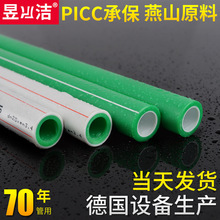您现在的位置是:半岛新闻网 > 行业动态
Nuclear fusion breakthrough breathes life into the overlooked Z
半岛新闻网2024-09-22 11:39:39【行业动态】2人已围观
简介Nuclear fusion holds untold potential as a source of power, but to recreate the colliding atomic nuc
Nuclear fusion holds untold potential as a source of power, but to recreate the colliding atomic nuclei taking place inside the Sun and generate inexhaustible amounts of clean energy scientists will need to achieve remarkable things. Tokamak reactors and fusion stellarators are a couple of the experimental devices used in pursuit of these lofty goals, but scientists at the University of Washington (UW) are taking a far less-frequented route known as a Z-pinch, with the early signs pointing to a cheaper and more efficient path forward.
In order to mimic the conditions inside the Sun, where hydrogen atoms smash together to form helium atoms and release gargantuan amounts of energy with no harmful by-products, we need a whole lot of heat and a whole lot of pressure.
Forming a stream of plasma and holding it in place long enough for these nuclear reactions to occur, either in a twisted loop or a neat donut shape, are the techniques employed by devices like Germany's wonky Wendelstein 7-X fusion reactor and China's Experimental Advanced Superconducting Tokamak. But this approach has its drawbacks, relating to the magnetic coils needed to suspend the ring of plasma, as study author Uri Shumlak explains to New Atlas.
"Magnetic field coils drive fusion devices to larger size and larger costs," he says. "The coils are also particularly sensitive to neutron damage, which requires more shielding, further driving size and costs."
A more efficient way to achieve these streams of plasma may be what is known as a Z-pinch confinement system. Rather than intricate webs of expensive magnetic coils, these systems pin the plasma in place with an electromagnetic field generated within the plasma itself. Z-pinch systems have been referred to as the dark horse of the nuclear fusion race, as the upside is a far simpler plasma configuration. The downside, however, is that instabilities cause distortions in the plasma that quickly cause it to hit the walls of the container vessel and collapse.
"Compressing and confining a plasma with magnetic fields in a Z-pinch configuration is prone to instabilities since the plasma can escape between the parallel magnetic field lines," Shumlak tells us. "The magnetic field forms circular loops around the plasma column which confines the plasma radially, but the plasma can form bulges, like an aneurysm, which locally weakens the magnetic field and allows the bulge to grow."
These problems have plagued the Z-pinch approach since its inception in the 1950s and effectively drove the development of tokamaks and stellarators, but the UW researchers say it still has something to give.
很赞哦!(7329)
相关文章
- Yes, big spiders are spreading in the U.S. No, they're not flying.
- Tesla recalls 1.8 million cars over hood issue
- 荔枝+音乐,超赞!茂南乡村歌手唱响“爱的古荔”
- iPhone owners sue Apple over 'Touch Disease'
- 厚植精神文明沃土 培树司法文明新风
- Donald Trump proved his 'support' for LGBTQ rights is meaningless in just 3 tweets
- Hamilton faces tough task but promises to bring his 'A
- Man leaves scathing TripAdvisor review of hipster restaurant, gets served ice cold revenge
- 11 Telescopes Exploring The Magic of Space
- Researchers perform first gene editing of viable human embryos in U.S.
热门文章
站长推荐

South Korean lawmakers brace for US election as Harris, Trump diverge on North Korea

Know your Olympians: Golden boy Arshad eyes podium finish

S. Korea, Japan to reopen finance ministers' talks on weekend

S. Korea, Japan to reopen finance ministers' talks on weekend

热浪来袭 科学应对防中暑

North Korea may conduct nuclear test to divert internal attention from food crisis: Seoul ministry

In three tweets, Trump bans trans people from military service

Russian FM to visit Pyongyang next month as follow